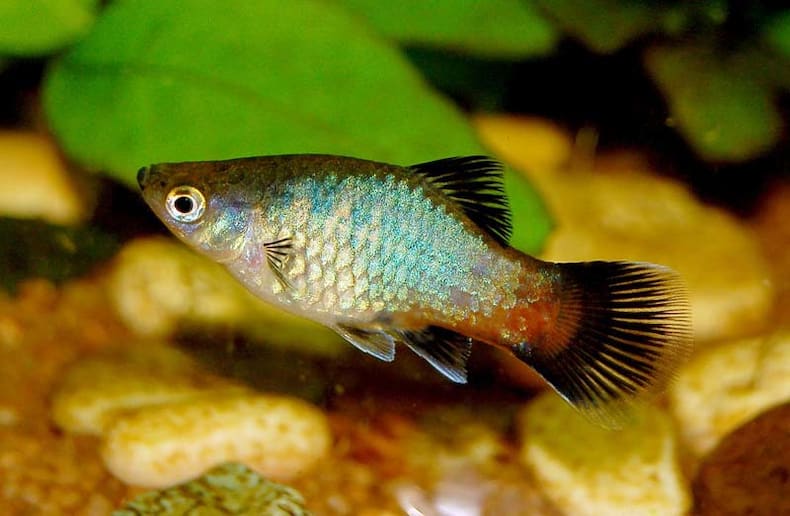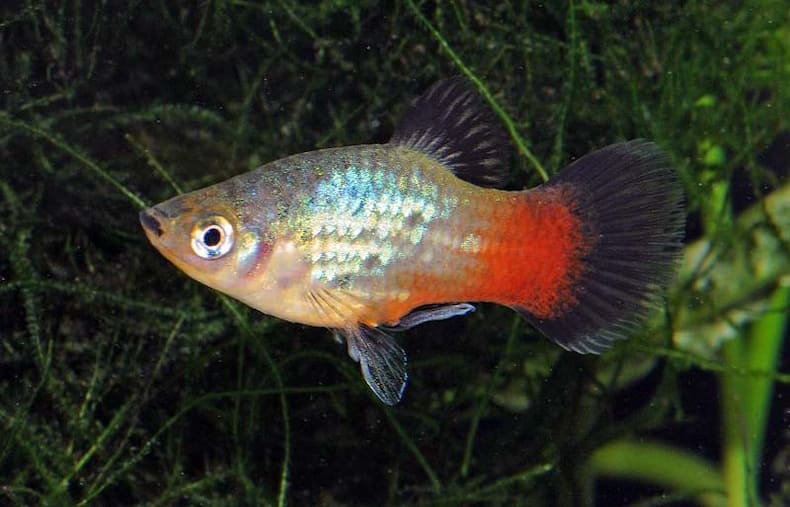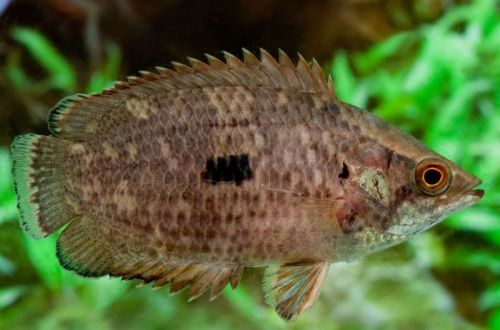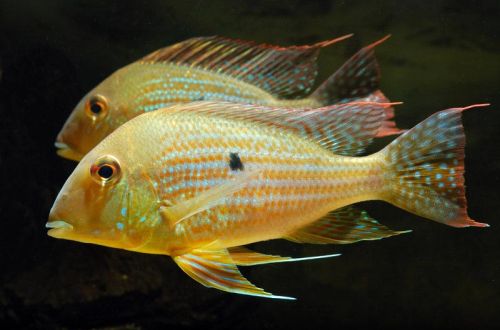
rainbow pecilia
Rainbow pecilia, English-language trade name Platy Rainbow. It is a color variation of the common Pecilia (Xiphophorus maculatus), artificially bred, not found in the wild. The fish has an iridescent greenish-blue body with a silvery belly, a red tail base and a black caudal fin.

This color scheme is typical for the Placilia supplied as “Rainbow” in Europe and America. However, historically, in the territory of the CIS countries and Russia, the name “rainbow” is one of the synonyms for Pecilia sunset (sunny).
Brief information:
- The volume of the aquarium – from 60 liters.
- Temperature – 20-28°C
- Value pH — 7.0–8.2
- Water hardness – medium to high hardness (10-30 GH)
- Substrate type – any
- Lighting – moderate or bright
- Brackish water – acceptable at a concentration of 5-10 grams per liter of water
- Water movement – light or moderate
- The size of the fish is 5-7 cm (without a brush on the tail).
- Nutrition – any food with herbal supplements
- Temperament – peaceful
- Content alone, in pairs or in a group
Maintenance and care, arrangement of the aquarium
Due to their unpretentiousness, they are considered a good choice for a beginner aquarist. For 3-4 fish, an aquarium with a volume of 50-60 liters, densely planted with thickets of plants, is quite enough. The latter act as shelters and a potential source of food. Pecilia need herbal supplements and will occasionally nibble on soft parts of plants or algae. For this reason, it is worth using hardy Anubias, Vallisneria, etc., as well as various aquatic mosses and ferns.

Although the fish can live in various conditions, they nevertheless prefer warm, slightly alkaline water. Maintaining a favorable habitat depends largely on the regular maintenance of the aquarium (partial water changes, waste disposal), the smooth operation of equipment and proper nutrition. Overfeeding is often the main cause of water quality deterioration. Beginning aquarists tend to overfeed their fish, and leftover food starts to decompose.
Food
A universal recommendation is to feed the amount of food eaten within 5 minutes at a time. In cool water, one feeding per day is enough. They accept most popular feeds in dry, frozen and live form, so there will be no problems with the choice of products.
Breeding / breeding

As with most other viviparous species, breeding is very simple, recreating special conditions is not required. Fry are almost guaranteed to appear in any freshwater aquarium in the presence of a sexually mature male and female. Parental instincts are not developed and the fish tend to eat their own offspring. In a spacious tank and with shelter, many fry can survive to adulthood. If you plan to keep the entire brood, then the juveniles will need to be transplanted into a separate tank.





